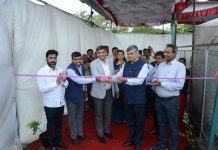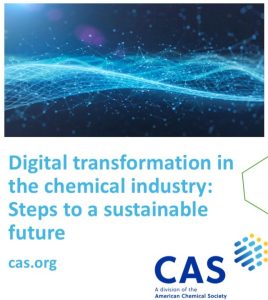D S Latha, Bharat Balkrishna Gharat, Sunil P Agarwal, Sunil L Choudhari
Abstract
In large scale projects, EPC/EPCM and hybrid project execution modes play a vital role. This article is a comparative study of the EPC/EPCM modes of project execution and highlights the application of integrated digital technology. Digital technology implementation has revolutionised traditional EPC/EPCM processes, with built-in intelligence enabling faster, timely, quality deliveries. We have briefly discussedthe most widely utilized digital applications including integrated project planning and management software (PMS), building information management, digital twins, IOT, and IIOT for enhanced asset performance and futuristic feature predictions for further enhancement in industrial project execution.
Introduction
Engineering, Procurement, and Construction(EPC) and EPCManagement(EPCM)are two major methodologies of project execution, wherein the project implementation from concept to commissioning is envisaged. The project based on its scale, complexities, constraints, etc. demands an appropriate attention of the concerned stakeholders and decision makers for ensuring robust project-execution methodology. Planning various stages for the project execution,i.e., concept development, FEED, basic design, and detailed design, construction/project execution need to be addressed in great detail along with aspects such as scope management, constraints management, resources (materials, construction manpower, engineering manpower), vendor management, risk management, schedule and cost management in addition to the core requirement of quality.
Organizations follow different approaches depending on project objective, complexity, and constraints. Projectowners have the option to choose hassle-free EPC mode of execution wherein the project responsibility is transferred to the EPC contractor and a consultant is appointed by the owner to manage the EPC contractor.
On the other hand, in case project is big in scale or complex or calls for multiple expertise, which are not available in a single organization, the projectowner may decide on project execution inthe EPCM mode. In this mode, detailed engineering, procurement assistance, and supervision of installation and commissioning are carried out by the EPCM consultant. Multiple contractors or even multiple EPC contractorsmay be engaged by the project owner for different project package executions along with an EPCM consultant in the project management execution advisory role.
One can also go fora hybrid approach orbuild-own-operate(BOO),design-build-operate-transfer, ordesign-build-finance-operate- transfer modes.
A successful project is earmarked with on time delivery, required quality, and completion within the budgeted cost. Additionally, the enhanced requirements on safety, sustainability, reduced manual interventions in the projects call for the use of SMART technology. Considering the fact that skilled manpower is declining with time, factors like project fast track execution, adequate safety, sustainability,and green initiatives are gaining more prominence. To achieve this, project owners need to have integrated, systemised,and advance digital solutions implemented during project execution.
This article focuses on EPC/EPCM models and advanced digital technologies applicable for project execution.
EPC and EPCM
EPC form of project execution, often referred to as ‘turnkey’ fixed price lumpsum contract projects, tend to be more expensive than the EPCM mode by 10% to 20%. This is based on the risk factor absorbed by the EPC contractor and their involvement from project initiation to handing over the plant to projectowner. EPCM mode of contract has cost advantage to owner and provides more control,flexibility of timeline, and vendor negotiation. Though the EPCM contractor is not directly involved in project construction, they are accountable for overall project management, basic and detail design, and execution on behalf of the project owner.Figure 1visually represents the EPC and EPCM functions.
Figure1: EPC and EPCM.
Few basic differences between EPC and EPCM modes are tabulated in Table 1.
Table 1: EPC and EPCM – comparison in a snapshot.
| S. No. | Parameter | EPC | EPCM |
| a. | Equipment supply contracts negotiation, equipment and process warranty,and signature | EPC contractor andvendor (separate equipment and process warranty between EPC and owner) | Owner and vendor based on EPCM contractor’s technical/commercial bid analysis |
| b. | On-site construction, contracts negotiation and signature | EPC contractor and vendor | Owner and vendor based on EPCM contractor’s technical/commercial bid analysis |
| c. | Supplier selection | EPC contractor with due consideration of specific owner requirements-if any as per contract agreement. | Based on mutual agreement between theowner and EPCM contractor |
| d. | Construction site safety | PMC/owner, EPC contractor and sub-contractors (as per contract agreement with owner) | EPCM and contractors (as per contract agreement with owner) |
| e. | Regulatory authority permissions and compliances | Owner/EPC contractor (except for permits in the name of owner) as per contract agreement | Owner with EPCM contractor’s assistance in paperwork |
| f. | Project budget overruns and savings, daily expenses | Owner/PMC/EPC | Owner/EPCM |
| g. | Interface management | By EPC | By EPCM |
Hybrid model of execution includes a combination of EPC and EPCM strategies, wherein a few complex and proprietary packages are executed in the EPC mode to simplify the execution process while balance packages/plant units are executed in the EPCM mode. This execution philosophy provides more flexibility to the projectowner, reduces or helps maintain the construction time/schedules with simpler coordination profile and smooth execution.
In addition to routine engineering deliverables, specialised and customised service solutions are offered by EPC and EPCM service providers like geotechnical studies, SIL study, hazop report, hazid report, 3D integrated engineering, electrical system studies, and digital service offerings.
Digital Services
Digital service offerings for EPC/EPCM service providers include integrated digital technologies superimposed on project execution experience-based processes and accumulated tacit knowledge.Digital engineering services include program management, product engineering solutions, asset digitisation, and asset management solutions.
Digital product engineering solutions include system reliability assessments, failure effect analysis, computational fluid dynamics analysis, remnant life assessment, reverse engineering, weight optimisation and end-to-end solutions, customised software for EPC design, etc.Asset digitisation services include latest technology offerings like laser scanning (above ground) and GPR services (underground services), interactive reports and datasheets, linking and hotspotting of manuals and assets, making project specific dashboards. Asset management solutions include implementation of advanced maintenance strategies like diagnostics, IT-OT integration, and unified platforms.
A brief overview of digitally integrated project planning and management software, integrated building information system, digital twins, IOT and IIOT is presented below:
- Integrated project planning and management softwareincludes documentation and cost control applications used for project planning, management, engineering design, and construction. PMS is a powerful and robust tool utilised from anywhere at anytime for project planning based on prioritisation, scheduling timelines, look-ahead planning, progress review of projects, monitoring portfolios and optimisation of resources, collaborative content management, data analysis, easy access to documents, prevention of document duplication with same revision, report generation and associated follow up.Multiple software for engineering design tools available in the market could be selected by design engineers to suit the organisational and project requirements. Digital engineering utilises software tools to generate and update engineering design drawings and documents and allow sequential information flow among multiple engineering disciplines. Streamlining the workflow, collaborating teams by prompting for data as per the configured data flow path, built-in systematic process tagged with timelines ensures timely delivery of better-quality documents.Digitalisation also promotes seamless equipment and associated auxiliaries’ procurement using integrated platform for issue of tender documents, receipt of offers from bidders in electronic form, bid evaluation process and order placement (with access only to employees within the organisation), vendor document submissions and online review/approvals, tracking equipment supply status to site, cost management and issue management. During construction stage, advanced digital technologies like internet of things(IOT) sensors, 3D printed parts, 5G wireless spectrum, drones for inspecting unapproachable areas empower optimum construction quality, progress tracking, and adherence to safetystandards and scheduled roster.
- Integrated engineering using Building Information Management (BIM) concept: BIM system is a process incorporated in most of the building construction sector projects for generating actionable intelligent digital versions of building structures with efficient and collaborative planning, design and construction and lifecycle management from initiation to implementation, followed by renewals/renovations. BIM models generally include information regarding material, parts, geospatial, procurement, financial and logistics. BIM model data can also be shared online through a common accessible storage space. Typical BIM model is shown in 2.
Figure2: TCE’s BIM model of an institutional building.
BIM system has been developed through multiple levels as listed below:
- BIM Level 0: Individualistic paper-based drawings developed based on documents generating individual skill set and collaboration.
- BIM Level 1: Limited 3D modelling and 2D construction drawings.
- BIM Level 2: 3D modelling with superimposed collaboration/teamwork, saving coordination time, rework, and cost-to-company.
- BIM Level 3: Single 3D model is shared by team members for generating models, often referred to as ‘Open BIM’. This model ensures better collaboration between team members and associated multi disciplines.
- BIM Levels 4: Advanced model with addition of time scheduling, enabling sequential progression of work.
- BIM Level 5: Includes costing, budget analysis, and tracking as add on.
- BIM Level 6: Considers sustainability data, which has gained more importance in the industry.This model incorporates energy consumption calculations and provides insights to construct an energy efficient building, enabling the reduction of carbon footprint.
Current BIM digital models enable designers to walkthrough, detect clashes, detect uneven levels, reduce rework,and reduce wastage of construction material. In future, we may have cloud-based BIM digital solutions with inbuilt artificial intelligence and machine learning to automate tasks and optimize design and energy analysis. Further, integration of IOT and sensors from constructed building can provide real time data for monitoring and analysis of critical data like energy consumption, people occupancy, and structure health. Superimposed augmented and virtual reality could revolutionise model to perform as training simulators, aid online site visualization and design reviews.Further developments to enhance interoperability between various BIM software’s is an afterthought to integrate/facilitate seamless data transfer and cooperation among project stakeholders, regardless of the software they use. Furthermore, BIM could also incorporate advanced data analytics and predictive/prescriptive model capabilities to forecast project dynamics, identification of potential risks, and improve decision-making during project execution.
Futuristic BIM models are likely to be enhanced with assimilation of emerging technologies, enhanced interoperability and emphasis on data-driven decision-making and sustainability objectives.
Digital Twin for Asset Management
Virtual replica representation of a physical asset, system or process is referred to as Digital Twin. Digital twin models are being used in infrastructure, equipment manufacturing industries, healthcare, aerospace, defence, energy utilities, etc. for visualisation of lifecycle performance of the system and online training. Digital twins facilitate project monitoring during and after construction and allows project team to improve decision making, manage risks, increase productivity and safety, enhance designs, and reduce expenses. For equipment, digital twins use online or real time data in combination with historical data and simulate future predictions.
By integrating with smart sensors and BIM; adopting AI, virtual,and augmented reality; and utilising unmanned aerial vehicles (UAVs) referred to as drones in construction sites, the connected digital twin implementations, referred to as cyber-physical systems, with bidirectional connectivity accelerate optimum data driven decision making. This leads to improved work processes, quality, predictive maintenance, performance optimisation, and lead times.
IOT and IIOT for Enhanced Asset Performance
Digital services also include compilation of data from multiple sources utilising state of the art IOT/IIOT devices, segregating/filtering the relevant data, and analysing them to derive insights in the form of predictive /preventive maintenance tools. Typical digital service offering screen with implemented IOT/IIOT including onlinedata monitoring, analysis and predictive analytics enabling optimisation of operations, advanced asset management and performance, as shown in Fig. 3. Implementation of IOT/IIOT enabled systems also enhances efficiency, interoperability, security, scalability, and cost reduction.
Fig 4: Typical predictive analytics screen.
Conclusion and Way Forward
To summarise, EPC commissions contracts pertaining to design and construction whereas EPCM contracts include engineering and construction support services. EPC and EPCM modes of project execution have been carried out for many years based on theproject owners’ requirements and associated risks/complexities.
The effectiveness of project execution in the EPC/EPCM mode can beenhanced by implementinglatest developments in digital technology and services offered by domain experts. State-of-the-art developments in technology include digitisation and digitalisation with superimposed Industry 5 applications. It is imperative that digital tools like PMS, BIM, Digital Twins, and IOT- and IIOT-enabled infrastructure play a vital role, enabling the future generations to focus on next level of excellence in engineering and project delivery.
Asset management is alsoone of the fields gaining more importance owing to cost reduction and plant efficiency improvements. Asset management services include management of smart asset register, implementation of advance maintenance strategies, predictive-prognostic diagnostics, artificial intelligence and machine learning strategies, digital advisory solutions, mobility and digital workforce solutions(augmented realityand virtual reality-based training, digital helmet).Robotic process automation is being currently applied in assembly lines of manufacturing units with repetitive tasks. In addition, unified platforms within the plant for integrated dash boarding and visualisation are envisioned for online tracking, data analysis based on historical data, project risk review, and management using readily available industry software and hardware.
Supplementation of digital platforms with high speed, low latency 5G wireless communication networks enable data access, monitoring and faster remedial actions for remote inaccessible location applications like river water/sea water intake systems and intermediate pumping stations for plants. Furthermore, collaborative cloud platform consortium of plant owner, EPC/EPCM team, suppliers, contractors, and subcontractors facilitatesuninterrupted coherent communication and data sharing, which could enable preventive maintenance, prevent spurious plant shutdown or draw attention to specific instances leading to emergency situations.
Artificial intelligence and machine language powered digitisation in combination with niche technologies like video image analysis augment current day control systemsto venture into plant operation flexibilization, improvement in plant efficiencies, effective plant surveillance and many more industrial automation applications.
In a nutshell, Digital technologies deliver an all-inclusiveenhanced engineering, procurement, construction and project management and execution experiencewith real-time monitoring and analysis, predictive and prescriptive maintenance, improvement in plant efficiency and productivity, overall plant performance optimisation, cost reduction, time saving, material wastage prevention and data enriched decision-making in industrial projects with due consideration of sustainable future.TCE is an ideal ‘integrator-partner’ for digital in plant and infrastructure space with a strong partnership ecosystem.
BIO
D S Latha,General Manager and Discipline Head (Power Business Unit), is responsible for improvisation in utilisation of existing technologies, adopt emerging technologies and drive design innovations. She has performed roles in field instrumentation and control systems engineering as project engineer, specialist engineer and project manager. She has experience in feasibility reports, basic and detail engineering of oil and gas industry including offshore platforms and refineries, petrochemicals, polymer and power industry.Her areas of interest alsoinclude sustainability initiatives, control systems, asset management systems, renewable energy, smart cities, Digital Twins, and command control centres.
Bharat Balkrishna Gharat(PG-Civil Engg), is Associate Vice President,Technology, Quality and Training.With overall experience of 33 years, his responsibilities include bringing value additions and innovative approaches in the project concepts to enhance solution reliability, simplified methodologies for time and cost savings, carry out critical reviews and conceptual reviews of project deliverables/project activities, problem solving, track and evaluate technological changes in the industry etc. He has very wide experience in complex infrastructure, industrial and power projects. He has worked on entire lifecycle of the projects from concepts, feasibility, and procurement to project execution and commissioning.
Sunil P Agarwal (graduate in Electronics Engg) is Senior General Manager,Discipline Head Instrumentation for Hydrocarbon and Chemical Business Unit and Instrumentation Discipline Technical Committee Chairman.He has about 37 years of experience in maintenance, erection, commissioning and basic and detailed engineering of oil and gas, industrial, machine automation, chemical, infrastructure, hydro-power projects in India and abroad. Also, experiencedin detailed engineering for various projects with DCS, ESD, F&G, PLC, SCADA, HMI based control system.
Sunil Laxman Choudhari, (C.Eng., FIE), General Manager and Sector Head (Green and Sustainable Chemicals), leads multifunctional teams for smooth execution of energy transition projects and has performed various roles in the process industry as process engineer, specialist engineer, technology manager and engineering manager in different parts of world like Americas, Asia, Africa and Europe.
All the authors are with Tata Consulting Engineers Limited.
Republished from May 2024
































